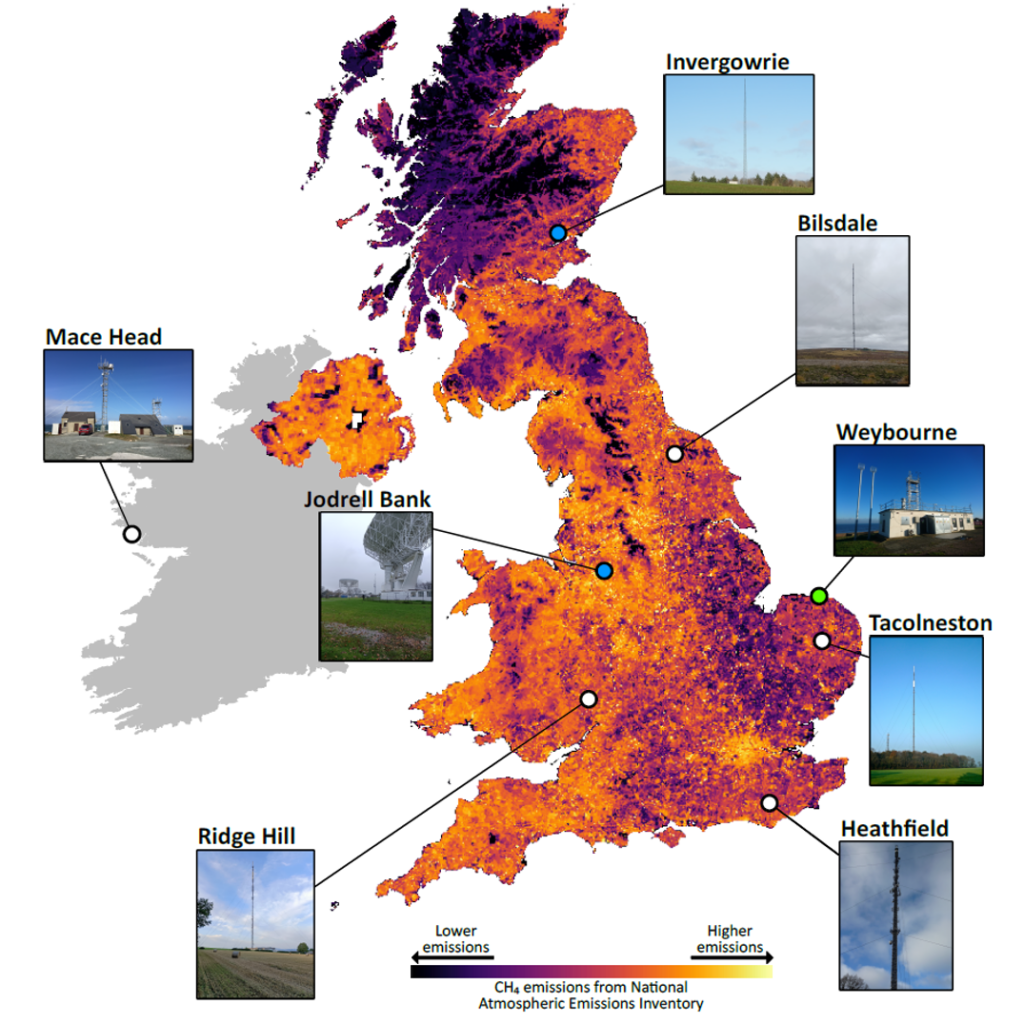There are two broad approaches for generating national assessments of greenhouse gas (GHG) exchanges, and therefore for assessing whether net zero goals are being achieved. These approaches are either bottom-up or top-down. Bottom-up estimates rely on accumulating data on exchanges at the land surface and scaling these up to national scale. For instance, combining census data on cattle numbers with estimates of methane emissions per individual livestock to give a national herd emission estimate. Top-down estimates instead measure the concentration of GHGs in the atmosphere over days and seasons, and infer sources and sinks from the data. Bottom-up approaches are challenging because all source and sink terms need to be included, and these are dynamic and patchy. Top-down approach have the advantage of providing a regional and/or national overview of net exchanges of GHGs, but lack detail on gross exchanges, and locations of sources and sinks.
In this project a new atmospheric observatory in Scotland will provide measurements that can be used to determine whether Scotland is on track to meet net zero targets. By linkage to an atmospheric transport model these atmospheric measurements can be connected to the bottom-up estimates to provide insights into mitigation efforts.
The project brings together expertise in carbon cycle and atmospheric science expertise from the University of Edinburgh, and agricultural and soil science from the James Hutton Institute. We will also be supported by scientists from the Met Office, the National Physical Laboratory and the University of Bristol.
This is part of a wider UK-wide effort to monitor GHG emissions as shown in the figure below alongside the current inventory map of methane emissions.

Invergowrie is owned and operated in a collaboration between the University of Edinburgh and the James Hutton Institute, with instrumentation due to be deployed there by NPL and the University of Bristol.
Heathfield is operated by NPL (utilising an existing telecommunications tower site) including deployments from the University of Edinburgh.
Ridge Hill, Tacolneston and Bilsdale are operated by the University of Bristol (utilising existing telecommunications tower sites). Mace Head is owned by the University of Galway with GHG instrumentation maintained by University of Bristol. Jodrell Bank is a new site being set up by the University of Bristol in collaboration with University of Manchester.
Weybourne is owned and operated by NCAS as a stand alone coastal research site.
